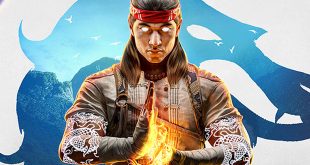For a while it was one of the most talked about topics in video games. Dead Island creator Techland decided to leave the franchise behind, opting instead to create a new game for a new publisher. The Polish studio’s vision was of a more focused, less comical game and, as is now video game legend, a split occurred, sending developer and publisher in separate directions.
“For us it’s history,” says Tymon Smektala, a producer at Techland. “The publisher wanted us to make another game in the vein of Dead Island. If Dead Island had four player co-op then the new game would have eight player co-op. If it had 100 weapons then Dead Island 2 would have 200. I think that was an okay direction for a potential sequel. A game that was bigger, better and more badass than the base game.”
The difference in artistic direction became a sticking point for Techland, a studio that was looking to forge its own identity in the games arena.
“It started with a list of things we wanted to improve after Dead Island,” says Smektala. “We kept adding to that list and soon realised that we were talking about a completely different game than Dead Island. So we made the decision to create a new IP with new gameplay.”
At this point the project needed to be solidified. “There are two vital mechanics in the game,” Smektala says. “One is the natural movement system for the parkour. The other one is the day and night cycle. We started to prototype those two things using Dead Island as a basis for that. It’s easier to get a grasp of what it is and how it behaves if you have some kind of foundation. Of course we made a lot of mistakes first. It was very hard to get the approach right.”
There are two vital mechanics in the game. Natural movement and the day and night cycle. –
Tymon Smektala
RUNNING FREE
As development of the game branched out into the creation of the parkour movement, different approaches surfaced and the team decided on a Mirror’s Edge style system with accessible movement points. Smektala explains, “our first approach was to just manually place thousands of hooks on the level. Those were the places where the player was able to interact with a ledge. We instantly realised that adding that parkour element to the game would really change the feel of the game. But then we realised using that approach that we wouldn’t be able to reach the level of freedom we wanted to achieve.”
As with any design process, trial and error is key. For such an important mechanic, the team needed to quickly identify what was wrong and how to change it. “When we started playing we realised there were places that you weren’t able to climb over, that a human in those situations would be able to climb,“ Smektala continues. “One of our programmers, Bartosz Kulon (known as The Head), came up with the idea that maybe we could analyse the geometry of the level as the player moves and play correct animations when he tries to climb over ledges, and interact with objects and obstacles.
“So he did a quick prototype and we realised that if we want to go the parkour route then we need to go with what he proposed.
“It was two years, maybe even more, of tweaking to make sure the system worked right and solving all of the problems with motion sickness. Presenting the moves in first person perspective – it was a lot of work nailing down the correct camera movements so it really gives players the impression of being this parkour specialist that traverses the environment.”
WISH YOU WERE HERE
Having to completely change one of the core systems of your game is a risky move, but by this point Techland was no strangers to risk. The reward of the day/night cycle, the second mechanic, is the beautifully realised world of Harran. It’s a completely fictional location, but with many inspirations. “We started creating the city of Harran by looking at various interesting places all over the world. Quite early we nailed down the idea that we wanted to place the game in Middle Eastern territories, but we didn’t want to recreate an existing city. We were looking for environments that were full of openings, like windows or interiors, that could serve as parkour routes for the player, like the Rochina favelas of Brazil. We tried to create one city using various places as inspiration, such as Mumbai, especially in the Dharavi locality, Istanbul and our own city of Wroclaw for the old town.”
A lot of the look of the city was down to Jula Arendt, the level artist who is also a qualified architect. “She worked as an architect and has about 60 buildings that exist in the real world that are still standing, so that speaks to her skills. She tries to make the cities as realistic and as believable as possible, so she uses all of her architectural experience to create a fictional history of the city. How that history and the events of that history would change and shape the city and the architecture. She’s also very keen on gameplay and has a good eye for it, so when she was creating reference points for the other level artists she always tried to introduce elements of gameplay to what she was doing.”
As with the natural movement system, there was still a lot of trial and error in making sure the city worked and Smektala is keen to stress how much of a team effort it was.
“What we achieved in gameplay was because of hundreds of iterations. We have a strong team of testers who are very focused on looking for gameplay and anything that can be an obstacle to gameplay. We introduced an element where a player can progress with their parkour skills. I don’t know if anybody noticed, but when you start the game you have a set of animations but they are quite simple, a little sluggish. They don’t give you that feeling of flow. But as you progress through the game you’ll buy certain skills you get new animations for the various moves.
We had to prepare almost four sets of animations to be able to support and reinforce that the player progresses with their parkour skills. We created the game on our own engine called Chrome, so for us it’s easier to work in that environment where you are able to introduce new features that support your vision of your game.”
FORWARD MOTION
One of the big problems was originally planning to release on all of the available consoles, including the Xbox 360 and PS3. Again, this became quite a well know issue as the team eventually abandoned those versions. “It was limiting for us,” says Smektala. “It was limiting in terms of the map size or the number of AI’s you can spawn around the player. It’s very important in a zombie game that the zombies, maybe not the smartest of enemies in the history of games, still have a lot of AI work done, especially as we had enemies that were able to move with almost the same fluidity as the player. It was a huge weight on the processing power.”
The decision to halt development of these versions was not an easy one for Techland, relatively low install base of next-gen consoles. “We didn’t want to be constrained because we wanted to deliver a game that would make Techland a household name in the games industry and in the players minds. So we took another big risk,” Smektala recalls. “I remember the conversations at the time when the decision was made and there was a lot of sleepless nights because it could really impact us on a business level. But we realised if we wanted to make something that would build our legacy, and cement our name as a developer, we needed to move forwards and skip older platforms. Our CEO really wants Techland to be able to complete with the biggest game developers in the world and he kept pushing on all fronts, so it was very important for him to showcase the power of new consoles of our engine.”
BUILDING A FOLLOWING
A year after the game released in 2015, plans were made to create The Following, a full single player expansion. This did not go exactly to plan especially as The Following changed from a close-knit city to a massive open environment. “Adding a vehicle to the game might seem like a no brainer, having fun driving over zombies with them. But when you start thinking about it, vehicles are something that works against the pillar of our game. Our game is about parkour. About being fluid and being able to move through the urban environment on your own feet. Now we’re taking you to this new map, it’s not a urban environment, but rural. It’s completely different, very flat, and we add vehicles so you don’t need to parkour anymore. It was a brave move on our side. Of course, we introduced a lot of elements that still require the players to use the parkour that they learned. But we were able to add a huge element that a lot of people asked for without realising the consequences of that addition.”
The attrition of what players wanted and what the game could provide was managed well by Techland as soon as they realised that these new mechanics also needed risk and reward. “We realised that maybe we could just take that risk and add something completely new and counter what we did before. But if we make that element good, we can enrich the experience and create an ultimate zombie game. We did lots of parkour routes to traverse from safe zones to cities. When we started The Following, you could drive over zombies without any consequences, but then we changed it so each time you hit a zombie, it deteriorated your car a little.
So there was this risk and reward. To escape you need to keep to the roads, but of course we added a lot of obstacles on the roads so it supports various player decisions. There were lots of small and big things that allow us to keep at least the essence of Dying Light and add some more elements to it.”
Making sure that Dying Light was a game that worked was tough and, according to Smektala, became tougher as time went on. “We need to accept that there will be no more perfect launches in the future for almost anything. Games are getting more and more complex. The relations and interdependencies between games and platforms like PSN and Xbox Live are getting so complex that it really is extremely hard to test the game in the live environment.”
But after all of the trials and tribulations, Smektala thinks that they’ve made a great game, and one that Techland has learned valuable lessons from. “Creating a game for me is always a hit and miss process that gives you lots of experiences and lots of problems and solutions that you try to remember for the future. One thing we learned on a more general level is that if you have a vision for your game, then keep pressing for it. Keep using whatever you need to use to fortify that vision and make sure that you don’t give up. Be ambitious and stay ambitious if you want to create a game that really resonates with people.”

 MCV/DEVELOP News, events, research and jobs from the games industry
MCV/DEVELOP News, events, research and jobs from the games industry



